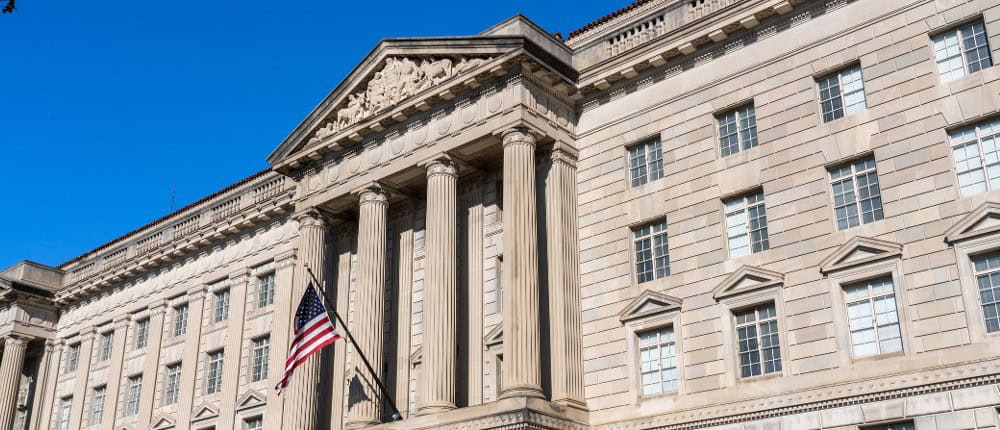Corporate bond issuance accelerates in Q1 to avoid election-related volatility.
Corporate bond issuance has increased by nearly 40% so far this year compared to the same period in 2023, reaching its highest level since 1990. A combination of historically low spreads and anticipated volatility from a fierce U.S. election and uncertain economic outlook presented a rare opportunity for companies to seize on some calm before the storm. Teddy Hodgson, Co-Head of Investment Grade Debt at Morgan Stanley, says he estimates that this year’s corporate debt issuance is “circa two months ahead of what [we] would consider a normal type debt issuance.” He also affirmed his view that the election is a driving force behind it. The average IG bond spread is currently just 93 bps, which is the lowest level since November 2021, and nearly the lowest level in 19 years. Given the attractive environment for issuance, it appears many companies are attempting to get the bulk of their funding for the year secured early before what is expected to be a much more volatile second half of the year. Richard Duffield, Head of Convertible Debt at Citi Bank, offers his view that “It’s really a nine-month year from an issuance perspective… the fourth quarter is a non-starter… I don’t know what the election is going to look like, I don’t know what the markets are going to look like – I want to avoid that volatility.”
U.S. Banks Q1 Earnings Preview: Less focus on interest income and more focus on investment banking.
Next week, large capital banks in the U.S. will begin reporting Q1 earnings and it appears the revenue environment has begun to shift… Below is a preview of what to expect from Q1 earnings. First, net interest income should continue its decline as Fed H8 data has shown a YoY decline in loans outstanding with continued declines across lending categories over the last several weeks. This will be further impacted by YoY growth in deposits which showed full year growth for the first time since 2022. Next, according to Dealogic, there has been a 20% increase in investment banking (IB) revenues between 4Q23 and 1Q24. As a result, the earnings of banks with larger investment banking footprints should benefit significantly whereas the revenues of those with smaller footprints will likely benefit only modestly and may only be able to offset a portion of expected declines in net interest income. The increase in IB revenues has been led by debt issuance, which is further supported by the accelerated issuance we noted above. For capital, we do not expect any material changes as banks spent the last year building CET1 capital and the uncertainty surrounding the Fed’s rate path as well as the U.S. presidential election should keep banks in a defensive posture. Finally, asset quality metrics at the banks are expected to continue normalizing due in part to some deterioration in credit cards; however, significant deterioration still appears unlikely at this juncture. In addition, the market will continue searching for any evidence of deterioration in commercial real estate loan books, which remains the primary concern of U.S. banks for most investors.
U.S. Manufacturing expands for the first time since fall of 2022.
The Institute for Supply Management (ISM), a monthly indicator of economic activity based on a survey, rose 2.5 points to 50.3, the first expansionary print since September of 2022. While just barely above the level of 50 that divides expansion and contraction, the figure represents that factory activity is picking up steam. This result was somewhat of a surprise, as survey estimates had projected U.S manufacturing to remain in contractionary territory yet again. Many factors played into the positive figure, the most prominent being the growth of new orders. Chair of the ISM Timothy Fiore stated “Demand remains at the early stages of recovery, with clear signs of improving conditions. Production execution surged compared to January and February, as panelists’ companies reenter expansion.” Suppliers and customers have both been clouded by a feeling of pessimism for some time, and the ISM figures highlight that it may be safe to turn the corner. Of the 15 industries tracked in the ISM report, nine reported growth and six reported contractions. The strongest contributors in order were textile mills, nonmetallic mineral products, and paper products. While the top detractors were furniture and related products, plastics and rubber products, and electrical equipment. While the overall report isn’t a tell-all indicator of comprehensive economic strength, snapping 16 months of shrinking activity is a step in the right direction to give other sectors of the economy a needed confidence boost.



